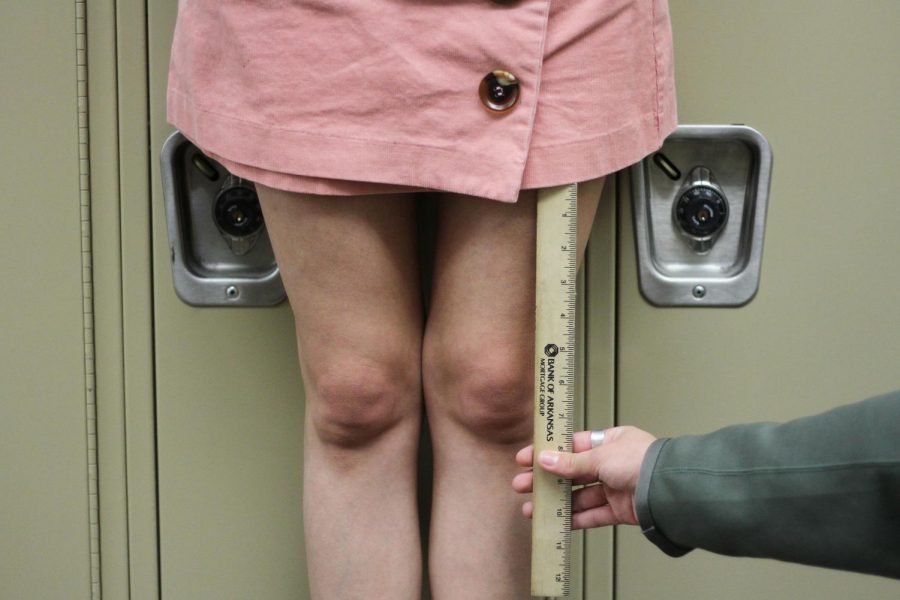Addressing Dresscode
November 9, 2018
Dress code is often one of the most controversial aspects of school policy. 54% of public schools in America have and enforce a dress code. Some claim that it specifically targets young females and unjustly sexualizes their bodies, while others believe that dress code is an important component to a distraction-free learning environment for students of all genders. The two perspectives share valid points; therefore, 16.5% of public schools in the United States avoid dress code entirely and require students to wear uniforms.
Often, female students’ biggest complaint is the rule about shorts. The school dress code states that shorts, skirts and skorts can not be shorter than four inches above the knee. Arkansas weather can easily reach 80 degrees in the summer, and with an outdoor campus, the heat can be a huge conflict with dress code. Since most women’s fashion often has shorter shorts, junior Karla Sanchez believes this rule is too strict.
“I feel that we should have a dress code that does not limit us, especially when it is really hot,” Sanchez said.
Another significant topic of discussion is the rule regarding hats. Students are not allowed to wear hats or hoods inside the building. As explained by school administrators, hats cause a safety issue. They wants faces to be visible on cameras in case something were to go wrong. Sophomore Jimmy Cerutti has been caught breaking the hat ban several times.
“Obviously, there are some hats that protect faces more than others, but stuff like beanies [do not pose this problem],” Cerutti said.
While most students dislike the dress code, teachers must enforce it. Administration has made dress code a guideline for students to follow, and it is the teacher’s job to implement dress code in students’ daily lives. Spanish teacher Kathryn Maus stands in her doorway and checks her students for dress code daily.
“To me, dress is the furthest thing from my mind,” Maus said. “I would rather have kids focusing on what I am doing. I am just enforcing it because my employer asked me to be an enforcer of the rules.”








